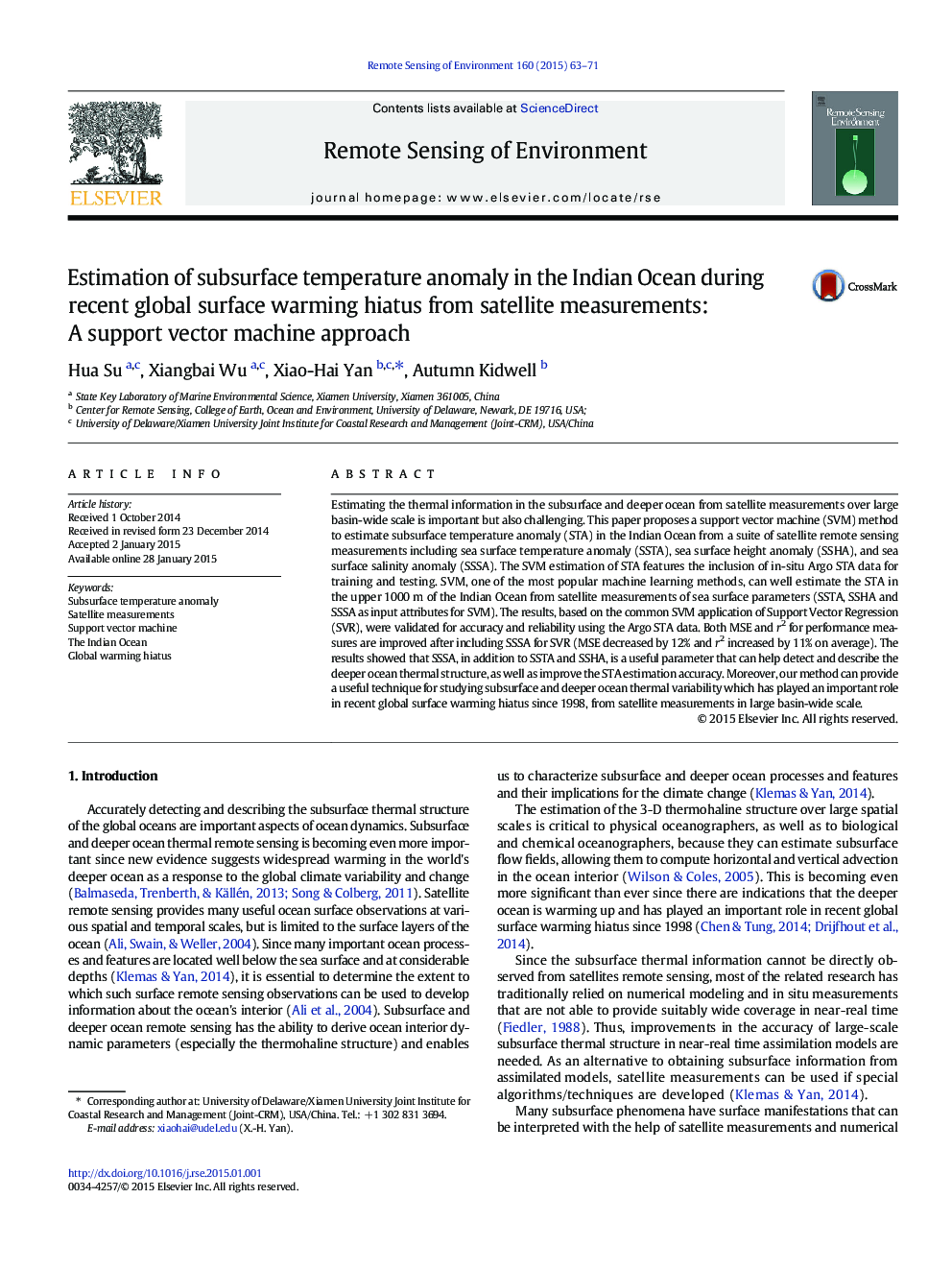| Article ID | Journal | Published Year | Pages | File Type |
|---|---|---|---|---|
| 6345958 | Remote Sensing of Environment | 2015 | 9 Pages |
Abstract
Estimating the thermal information in the subsurface and deeper ocean from satellite measurements over large basin-wide scale is important but also challenging. This paper proposes a support vector machine (SVM) method to estimate subsurface temperature anomaly (STA) in the Indian Ocean from a suite of satellite remote sensing measurements including sea surface temperature anomaly (SSTA), sea surface height anomaly (SSHA), and sea surface salinity anomaly (SSSA). The SVM estimation of STA features the inclusion of in-situ Argo STA data for training and testing. SVM, one of the most popular machine learning methods, can well estimate the STA in the upper 1000Â m of the Indian Ocean from satellite measurements of sea surface parameters (SSTA, SSHA and SSSA as input attributes for SVM). The results, based on the common SVM application of Support Vector Regression (SVR), were validated for accuracy and reliability using the Argo STA data. Both MSE and r2 for performance measures are improved after including SSSA for SVR (MSE decreased by 12% and r2 increased by 11% on average). The results showed that SSSA, in addition to SSTA and SSHA, is a useful parameter that can help detect and describe the deeper ocean thermal structure, as well as improve the STA estimation accuracy. Moreover, our method can provide a useful technique for studying subsurface and deeper ocean thermal variability which has played an important role in recent global surface warming hiatus since 1998, from satellite measurements in large basin-wide scale.
Related Topics
Physical Sciences and Engineering
Earth and Planetary Sciences
Computers in Earth Sciences
Authors
Hua Su, Xiangbai Wu, Xiao-Hai Yan, Autumn Kidwell,
